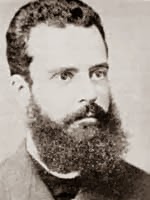Non-Violent Communication is something that is not the easiest thing to define. The part of my brain that has a degree in Communications wants to explain it as a framework for communicating. This is sort of like saying that Eric Clapton’s custom built “blackie” Stratocaster is a guitar.
If you look on the
Center for Non-Violent Communication site, you will learn that it is a way of communicating/interacting that is
“based on historical principles of nonviolence-- the natural state of compassion when no violence is present in the heart. NVC reminds us what we already instinctively know about how good it feels to authentically connect to another human being.”
Non-Violent Communication was initially developed by
Dr. Marshall Rosenberg, in the 1960’s “as a communication process that helps people to exchange the information necessary to resolve conflicts and differences peacefully”. Dr. Rosenberg is the author of a number of
Non-Violent Communication and a
number of other books on NVC.
There are aspects of NVC that touch on how we speak, how we listen, and how we bring compassion and empathy into our interactions with others.
This past Spring I had the chance to interview
Dr. Judith Hanson Lasater, the author of a number of books, including
What We Say Matters. She explained it as:
Non-Violent communication is more of a process than a thing. And it begins first with understanding within yourself what need you are trying to meet before you speak. It’s also a process of learning how to listen to what the other person might be saying with their heart, not to get caught up with what they’re saying with their words.
And none of that sounds like it has much to do with Project Management. Except that it does. More and more, PMs on both the traditional side and Agile side are coming around to the importance of empathy in their work. As they realize that the job involves more than just getting people to do things, they are realizing the value of acknowledging that we work with human beings and that these individuals deserve more than just being told what to do.
It would be easy to say that NVC is a pattern or framework for how we talk and listen to people, but just following those practices isn’t going to mean you are really practicing NVC. As one friend said to me, “if you don’t have it in your heart, it is not the same”.
I believe this is a very important topic and it is especially important to those working in the Project Management area. If once upon a time, our focus as PMs was telling people what to do, and that has been evolving more towards the individuals and interactions focus, this is an indicator of a next stage in looking at how we approach working with others.
A great example from my interview with Dr. Lasater was when I described part of the role of someone leading an Agile team as being to empower people and “give people autonomy”. Dr. Lasater questioned me about my phrasing because it expresses my way of thinking. To say that a leader empowers, or gives autonomy means that the leader does not see the recipient as having those already. In fact, each of us has autonomy and is empowered… we (or others) may just not be aware of it. Or, as Dr. Lasater put it:
My words reflect my thoughts, my thoughts reflect my beliefs, and my beliefs run my life, especially the unconscious ones. So if I have the unconscious belief that I am some how giving someone autonomy, that's going to leak out in my words and my body language, my expressions and the rolling of my eyes and whatever I'm going to do. I have to first understand that they have autonomy and I recognize that. So I might say in that situation, “I'm feeling uneasy because I have a need for mutuality and shared power in this creative endeavor and sometimes I feel worried that the group does not move in that direction. I am wondering if you would be willing to tell me if I have said or done anything that may have inhibited your trust?”
Her explanation of how to express the message is a good example of how people often speak when using NVC. This is the opening post of a series I am going to be working on related to NVC. As a project manager, it is something I have been working towards coming to terms with for a while now. In the coming posts I’ll be writing about my attempts to gain a deeper understanding of it, my attempts to practice it and all that I learn along the way.
Throughout the series I will be working in elements from my conversation with Dr. Lasater and I am also hoping to interview others who are practicing NVC while working with teams and with other trainers who are practicing it in the classroom. (Many of the Certified Scrum Trainers are now participating in NVC Friday each week.)
If you are practicing NVC and are open to being interviewed about your experiences with it, I would love to hear from you.
And, if you’d like to learn more about Non-Violent Communication, here are some valuable resources:
Center for Non-Violent Communication
Marshal Rosenberg’s Amazon Page
What We Say Matters


 J.B. Rainsberger (@jbrains)
J.B. Rainsberger (@jbrains)





 J.B. Rainsberger (@jbrains)
J.B. Rainsberger (@jbrains)

















